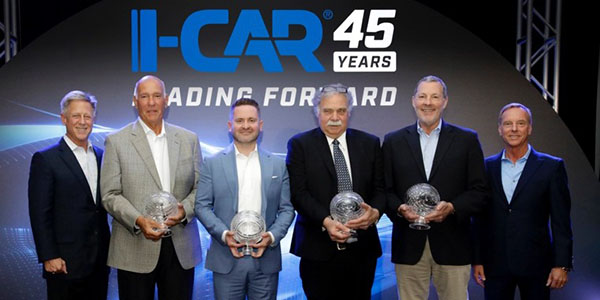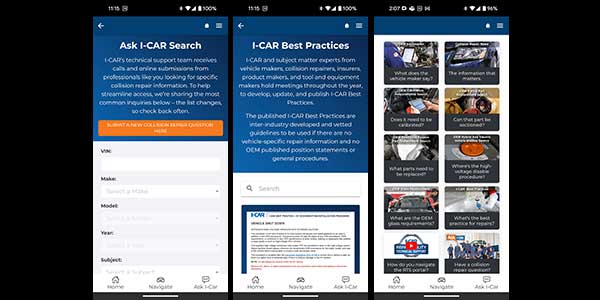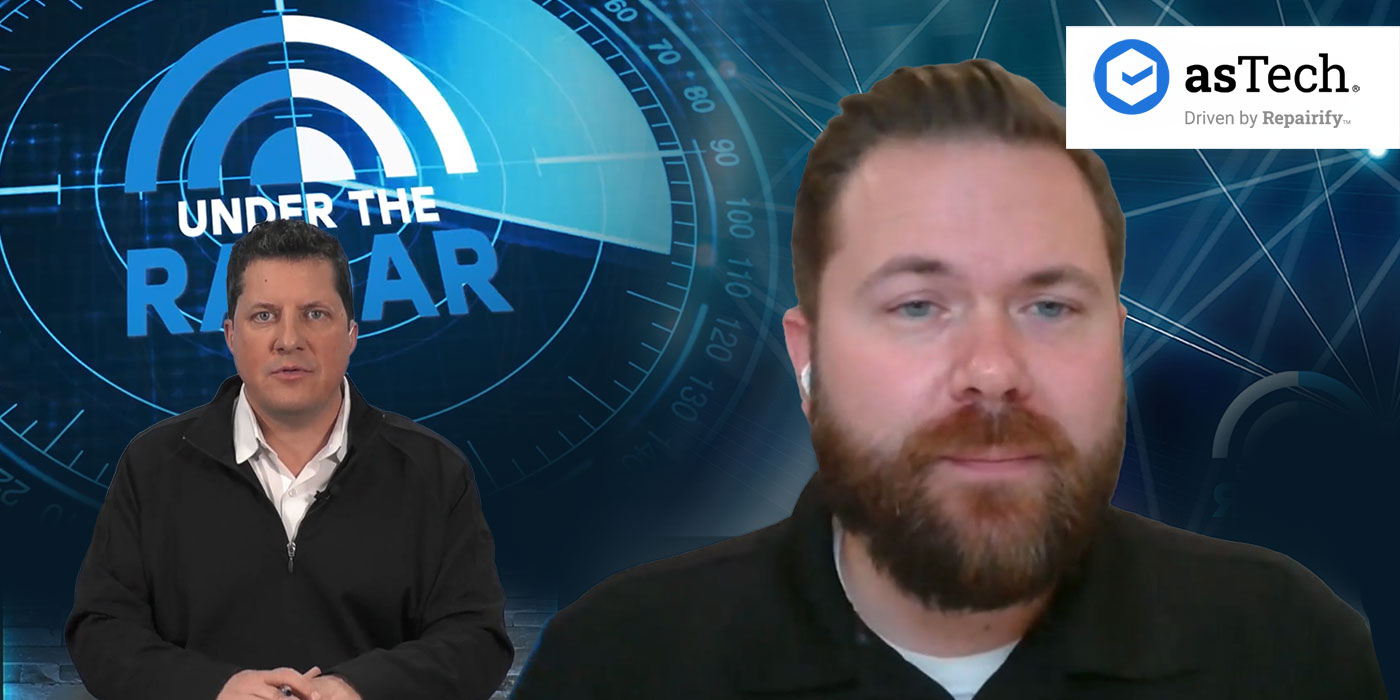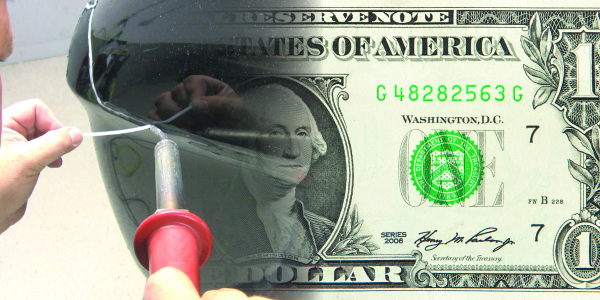
Plastic repair is not a new topic. We’ve all seen articles talking about procedures and products. We write estimates and do our repairs. The question I have for shop owners, managers, adjusters and technicians is: “Are you getting your money’s worth?”
This is a delicate subject, as it comes perilously close to discussing labor time and money – a taboo topic in our industry. Everyone wants in on that discussion, from consumers to insurers to shops. The truth is, everyone has a valid point. The issue I have is, are you getting your money’s worth when you do the repair?
There’s a lot to think about with this issue. Vehicle manufacturers are using more and more expensive plastic parts in the build process. When you and your shop take on that repair, what is your goal?
Equipment
The first thing to look at is equipment. Adhesive, airless, hot air, nitrogen welder – you have choices of equipment to use, or you can use a combination. With any of these tools, different people will yield different results. I could tell you a particular hammer is the best to use, but the problem is that somebody else may do better or be more comfortable with a different hammer that I feel is not as good.
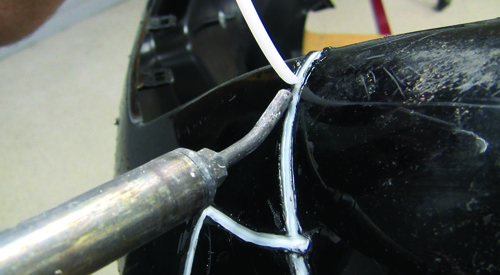
So, there is no correct answer to the question, “Which is the best process to use for plastic repair?” The end result required is a good-quality, long-lasting repair – how you get there is up to the technician and shop. I say technician and shop because a technician will only be as good as the training they receive and the accountability of the quality of work produced. You can spend all the money in the world on equipment, but in untrained hands, it’s worthless.
One thing I’ve learned is that each repair is different. It could be a tear or a tab repair, but there’s always some variables. Don’t get me wrong, there are some similarities, but there are also many variables:
- Type of plastic
- Shape of repair
- Access to surface
- Location of damage
- Thickness of plastic
- Existing finish
- Contamination
- Experience
- Maintenance of equipment
- Training
Another variable is, what would work best or more efficiently? That becomes a preference. I myself prefer nitrogen welding for tears. I use a hot staple gun to align the plastic and a nitrogen welder to fill back first then front. I finish it with an EZ-sand product. Using the correct plastic filler, this process produces an incredibly strong repair.
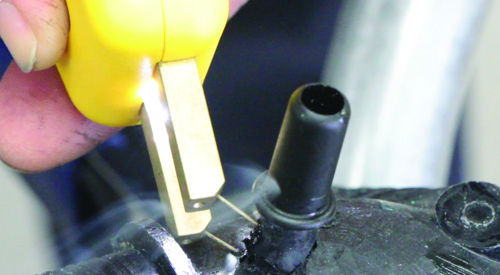
To determine whether welding or adhesive is better for tab repairs, it would depend on the type of tab. The point is that both procedures have strengths and weaknesses, and recognizing that fact will help you get your money’s worth.
Do not think that one procedure is best for all. For the most part, the equipment or products are inexpensive, and you’ll quickly get a return on your investment – if you communicate with everyone involved what the goal is.
Training
It’s hard to see the value of training. The attitude is, “We’ve been doing repairs for so long, why do we need training?” I hear that question so many times. And when I hear that, I already know that person has the hard, set opinion that training doesn’t help. The lack of information or maybe frustration with the industry has made it a challenge to change that mindset. However, when I hear the phrase, “I have trouble affording the training,” I know I can possibly help that person because at least there is a desire to learn.
Training is and can be expensive. The benefits or return are tremendous but hard to see. I appreciate I-CAR stepping up and doing the PLA03 class as hands-on training in the shop. This will go a long way toward helping all shop employees see the value in proper procedures. Many shops do not want to perform plastic repairs due to the lack of training and lack of faith stemming from previous failures. The reality is that doing plastic repairs offers many benefits to everybody in this industry. But training is the key to success.
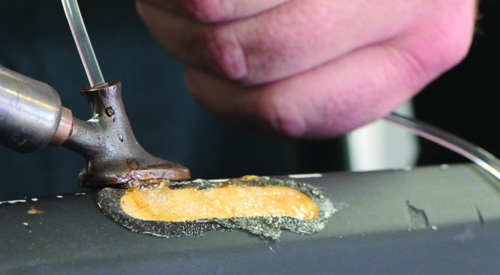
To avoid repair failures, technicians need to follow all steps precisely. Shortcuts will lead to problems. I see many techs using improper products such as metal fillers or metal glazes, and then they wonder why problems come up. This undermines the auto repair industry’s goal of quality of workmanship and a long-lasting repair.
Another aspect of this is also disconcerting: your reputation. When problems keep occurring, do you think about the damage being done to your reputation with customers? I recently ran into a technician who admitted he doesn’t like doing plastic repairs and doesn’t feel he’s skilled enough to do them, so he doesn’t put in any effort, hoping that the shop will quit writing repairs on bumper covers. This really undermines the goal for everyone. This also flies in the face of business. A technician only makes money when he’s working on the vehicle. The shop only makes money when the tech is making money. The basic rule is a shop and technician make better money on labor hours. The issue of those hours will be discussed later.
When shops have been properly trained and technicians are comfortable with procedures, fewer problems occur in the repair process. This does not just apply to plastic repair. Training bridges the gap of new procedures and new types of repairs. Never assume technicians know what the repair process is. Remember the old adage about assuming?
Estimating
Here’s where I need to be careful. I’m sure I’ll get e-mails from people with their opinions, but please save them. The debate on labor time will rage on long after you read this. The big picture is the benefits of doing the repairs. We all have to see the big picture from all sides of the box. Some of the benefits include:
- The customer: They get to keep the original part on the vehicle and get a timely repair.
- The insurance company. Repairs are done to save on costs of repair and rental.
- The shop. Labor hours bring in better dollars for the shop. Also, fit and finish is better with the original bumper.
- The technician. Benefits from repair hours and fit of part.
Making it worth the time is another key to plastic repair success. Training estimators to write a good repair time on the estimate would be the first place to start. Many have never done a plastic repair themselves or watched one from start to finish – the cleaning, prepping, repair process and finishing of a repair. How can a person write an estimate if they don’t have that experience?
A technician or shop will want to repair a bumper cover if they’re fairly compensated to do so. Receiving fair compensation is the dangling carrot to all repairs we do in this industry. In doing research for this article, I discovered that unfair compensation was the biggest reason technicians refused to do or resented doing plastic repair.
There is no book or reference chart to plastic repair. The aforementioned variables factor in on all repairs. Experience is the only way to evaluate the time that may be required to do any repair. To improve the number of repairs in shops, communicating and getting experience as to what it takes to do different types of repairs becomes a critical factor to both shops and insurance partners. We all have a goal. Many times, it’s the same for all.
The goal in most cases for the insurance appraiser is to save that bumper cover. From what I’ve seen and heard, many insurance companies are willing to work with shops to promote more plastic repair. In many cases, repairing may save a lot in cycle time or length of rental. There’s a tremendous value to all to promote plastic repair. Communication between all will help to achieve everybody’s goals. Yes, I know that picture is not all that rosy for everyone, but I’m an optimist.
The Goal
What is the goal? As bumper covers get more and more expensive, repairing becomes a more viable option. With new products and equipment, repairs can be done that were not possible before. What is your goal? Depending on who you are, it could be to:
- Reduce costs on repair
- Keep original parts
- Improve repair time
- Increase shop labor hours
- Increase revenue
- Get a bigger paycheck
- Achieve a strong, durable, quality repair
- Provide more services
Communication
To achieve success, you must communicate your goals to not just your shop but insurers and consumers. How you communicate any goal will be the reason a person either buys into the idea or bails out. Nothing is perfect at first, but making improvements every day will bring the right mindset to the game.
Helping to reach everyone’s goals requires a lot of talking and doing and asking opinions and getting the ball rolling. This also applies to insurance companies that want shops to increase the plastic repairs. Every time you communicate, explain the benefits and show them the benefits for all. Reducing costs on repairs and increasing revenues for the shop can be done at the same time. These goals are parallel to each other.
Summary
The goal for everyone is to perform a quality and durable repair on every vehicle at a fair price. To get your money’s worth, you need to communicate your goals and train to maintain consistency and quality. Increasing the number of plastic repairs being done in our industry can meet everyone’s goals. Now we need to communicate.
Limitations of Advanced Driver Assistance Systems (ADAS)
I would be remiss in my duties to not include a discussion of the limitations of plastic repairs.
I want everyone to remember to check with manufacturer procedures as to repair considerations prior to starting repairs. Radar and sensors for the autonomous features being offered to today’s consumer may be compromised by the repair procedures. The thickness of the plastic or the changing of that thickness can and does limit some radar systems, as does the paint and materials thickness on sensors. Please check before repairing and follow up to see if scans or recalibrations are required on electronics.










